Move aside Mona Lisa. Had an eyeful of the Eiffel? Here’s our inside guide to the best kept secrets in Paris. Uncover our favourite collection of Paris hidden gems.
See also how to spend 4 days in Paris and a shopping guide to the best souvenirs in Paris and an inside guide to the best hotels in Paris with a view of the Eiffel Tower here. Bon voyage!
The Best Hidden Gems in Paris
After being at the centre of so much history, drama and good food for so many centuries, Paris overflows with secret spots. The quickest way to find the best hidden gems in Paris is to book onto a tour, like this one from Get Your Guide on Unexpected Paris.
However, if time is on your side, explore these ideas one by one.
The best, the most curious, the life inspiring and the downright perplexing hidden gems in Paris. Allez!
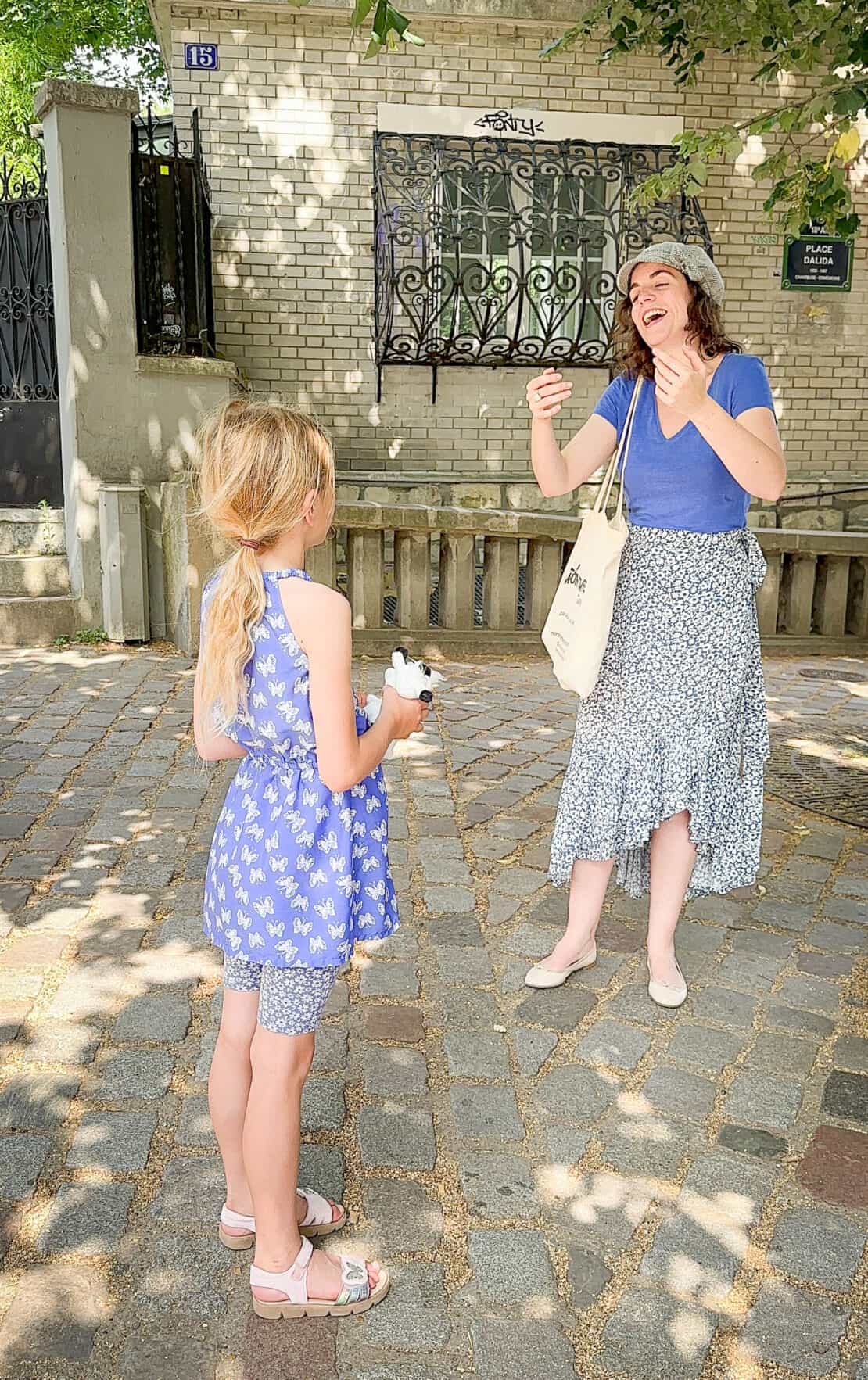
Explore Montmartre by Song
“Montmartre en Chansons,” led by the enthusiastic singer and guide Anne-Sophie Guerrier, provides visitors with a truly unique and immersive adventure.
This walking performance blends history, music, and enchanting stories, whisking participants back to an era of bohemian artists and accordion melodies as they explore the charming streets of Montmartre.
Highlights of “Montmartre en Chansons” include:
- A two-hour journey through thirty of Montmartre’s most iconic spots.
- A cappella renditions of twenty beloved French songs.
- Fascinating and entertaining anecdotes about legendary artists such as Édith Piaf, Charles Aznavour, and Jacques Brel.
- Tours are offered in both French and English and you can book here.
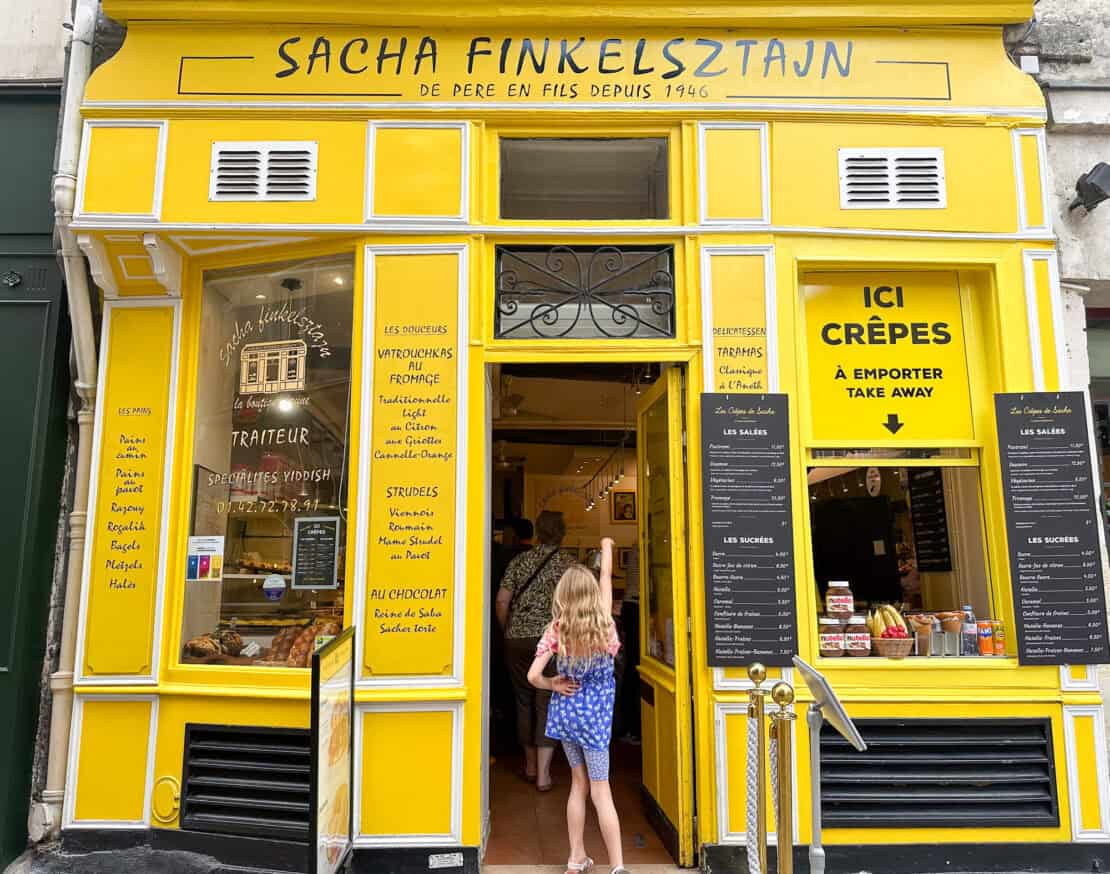
Take a Food Tour for Secret Histories as Well as Tastes
Take the Paris Ultimate Food Tour with Devour Tours to explore the charming, lesser-known streets of one of Paris’ most historic neighbourhoods.
You’ll step behind hidden doors to meet the people who run these family-owned spots, each integral to Paris’ culinary heritage. Along the way, you’ll savour French classics, Jewish delicacies, Middle Eastern-inspired pastries, and much more.
Every cheese carries a legend, and every recipe has a story to tell.
What’s Included
- Enjoy 11+ tastings, including two French wines, at 8 eateries in the Marais neighborhood—a feast that adds up to a full lunch.
- Meet the family who revolutionized French bread by staying true to traditional recipes, and taste their famous bread yourself.
- Visit Paris’ oldest covered market, dating back to the 1600s, and learn about the fresh produce that has helped make the French meal a UNESCO-recognized tradition.
- Follow your expert culinary guide into the heart of the Jewish quarter to taste a surprising yet distinctly Parisian pastry.
- Experience a proper French lunch at a traditional bistro, savoring a classic dish while learning the nuances of dining like a Parisian.
- Discover some of the last multigenerational, family-run businesses in the historic Marais neighborhood, with some operating for nearly a century!
Head to the Hammam
Embrace modern France with a visit to the art and culture-filled Institut du Monde Arabe and sip mint tea while gazing at Parisian rooftops and the bulk of Notre Dame.
For a more (ahem) immersive experience, strip off and head to the Hamman at the Paris Mosque (although not in that order.) Once you’ve recovered from the vigorous black volcanic scrub and in-depth steam among strangers, recuperate with honey-soaked baklava in the Moorish-inspired café outside.
Montparnasse Tower: The Best Secret View in Paris
The Tour Montparnasse may not win any beauty awards, but it makes up for all that with its view from the 56h floor. Peach, ruby reds, canary yellows and lavender blaze across the sky as the sun goes down, lighting up the Eiffel Tower and the sparkling grid of Paris around it. You can dine at Europe’s highest restaurant, the Ciel de Paris, if you book in advance and brace yourself for an international rather than local crowd. Cocktails, scallops and sunset over the City of Lights, what’s not to like? (There’s also a viewing platform, too, if you don’t feel ready to dine.)
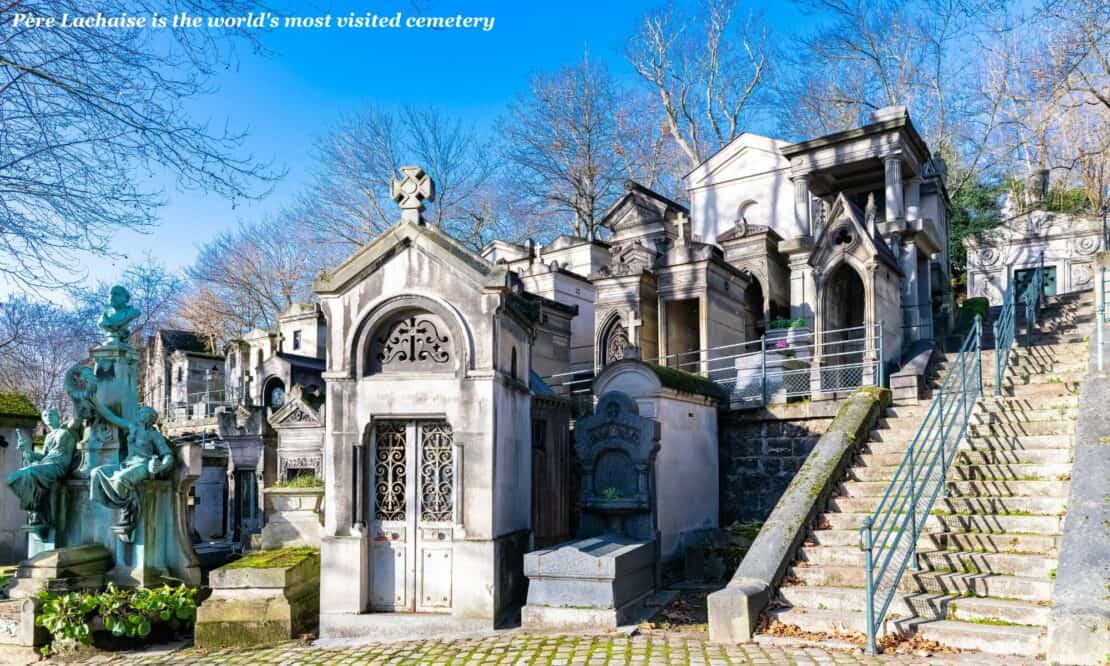
Morbid Paris: the Père Lachaise Cemetery
Known as the world’s most visited cemetery, Père Lachaise has over 70,000 ornate tombs of the famous and rich within a sculptured garden on over 100 acres of land. Notorious graves include Oscar Wilde in his suitably flamboyant graffitied tomb and Proust in his befittingly un-ostentatious grave. Jim Morrison can be found surrounded by devoted fans who scribble lyrics onto the trees by his resting place.
It’s a big place. so if you’re looking for someone in particular, it’s useful to carry a map with you.
Or, alternatively, book onto a walking tour and get more out of your visit that way. Reputable company Get Your Guide sell group walking tours of the cemetery or, for a little extra, you can book onto a private guided tour or Père Lachaise.
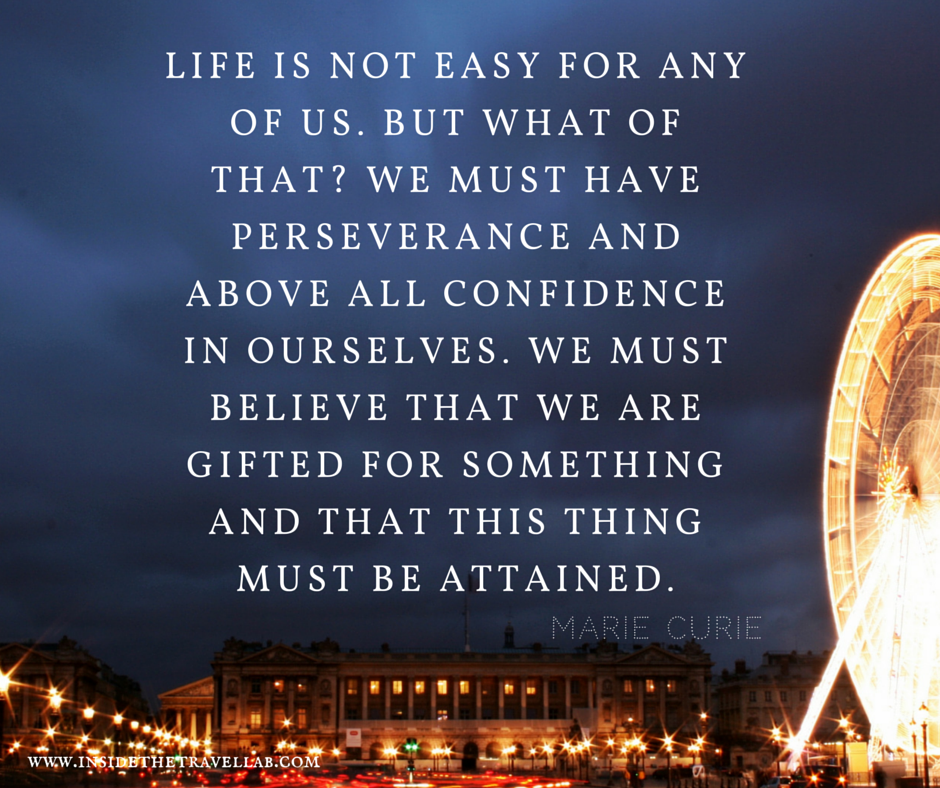
The Marie Curie Museum
A small and fairly quiet affair, The Maria Curie Museum lies on the leafy streets of the 5th Arrondissement in Paris. It was renovated in 2012 with a donation from Marie’s daughter, Ève Curie, and you can find the official site here. Originally housed in the Curie’s old laboratory, it’s an inspiring tale of the only person (not woman, person) to have won two Nobel Prizes in two separate science subjects. It also offers a surprise glimpse into the French beauty secrets of the past…when radioactive beauty treatments were for sale.
Marie Curie: An Incredible Story
A young woman, Maria Sklodowska, flees from Warsaw to Kraków for her own safety. She then moves to France in the late 1800s to study further. Her husband dies in an accident, leaving her a single mother with two young children. When World War I breaks out, she teaches herself how to drive and travels to the front line to use X-rays to help treat wounded soldiers.
Marie becomes the first woman to receive a Nobel Prize but, far more importantly, the only person in history to have won a Nobel Prize in two different science subjects: physics and chemistry.
Yet the French Academy of Sciences refused to admit her as a member, declaring that “women cannot be part of the Institute of France.”
The Swedish Institute
As the only dedicated cultural centre outside Sweden, a visit to the Institut Suédois certainly makes for an unusual thing to do in Paris. It displays a lot of love towards the country with concerts, art exhibitions and lessons in the language. They even bring a little taste of Sweden into the heart of Paris with an authentic smorgasbord and Swedish Fika in Café Suédois.
Fly in a Hot Air Balloon
Floating over Paris in a hot-air balloon is perhaps one of the most dreamy ways to see the world’s most romantic city. The most popular (and view worthy) times to drift upwards are at dawn or just before sunset, as the sun peppers buildings and landscapes with its good-morning or goodnight. There are several companies that run balloon trips including Ballon Air de Paris and Aerfun.
The Paris Plages (Paris Beaches)
When the summer arrives and the heatwaves descend, Paris greets July with four weeks of The Paris Plages.The banks along the Seine swap traffic for treats, as ice cream sellers, concerts and sandy beaches create what you could call a “Seine-side holiday.” Grab a deckchair, borrow a book or take up beach sports and kayaking.
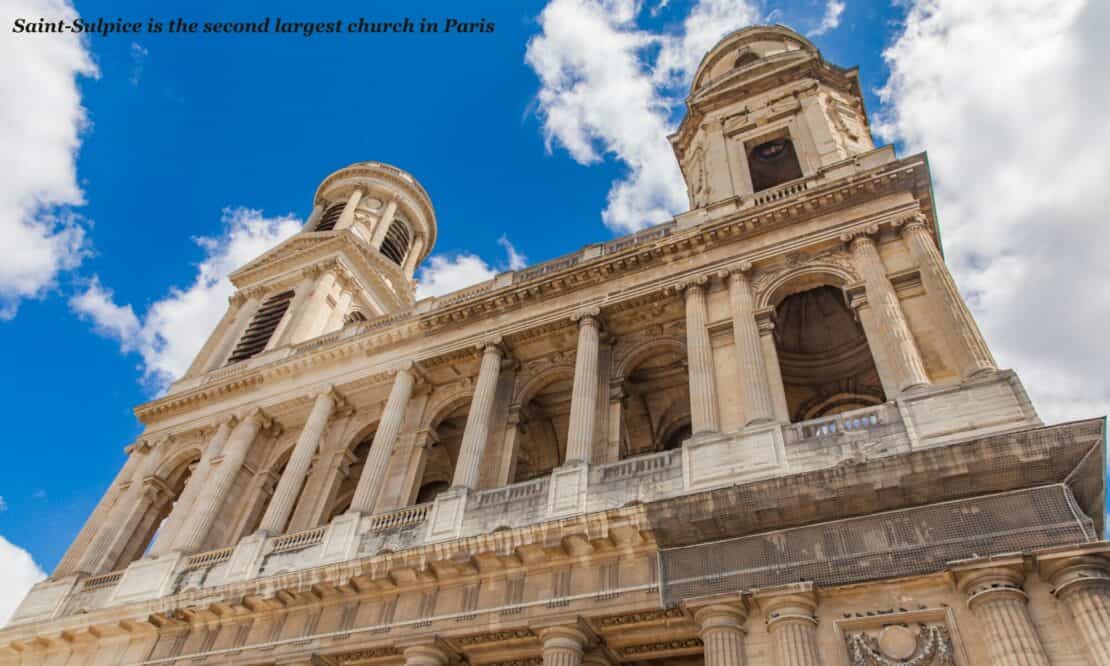
Église Saint Sulpice
The Church of Saint-Sulpice is a Roman Catholic church in Paris, France, located at the Place Saint-Sulpice within the Marais district in the Latin Quarter.
Saint-Sulpice is the second largest church in Paris, with only Notre Dame beating it to the top. It was built between 1646 and 1653 at the request of Jean-Jacques Olier as a parish church for the people of the Rive Gauche. The son of a wealthy family from Rouen, Olier took on a project to build an impressive church that matched to his status as well as being a spiritual leader in Paris.
The church is most famous for its association with the life and work of the composer Maurice Duruflé, who was a parishioner there from 1928 until his death in 1986. And in 1864, the church of Saint-Sulpice was classified as a historic monument.
The Baptismal font has an ancient porphyry basin which was rediscovered during World War II after being hidden under layers of plaster and paint. But that’s as far as the secrets go in this place.
Despite the claims of the Da Vinci Code, you can’t exactly find a Rose Line here which represents a pagan temple. Why do I say not exactly? You’ll have to visit to find out why.
The Catacombs of Paris
Discover a dark and fascinating chapter in the history of Paris through the decidedly unromantic catacombs.
The Paris Catacombs started life as quarries, which were then converted into a cemetery by order of Napoleon Bonaparte in 1810. A visit reveals floor to ceiling patterns of skulls and long bones and it’s a chilling thought to realise that the site’s use as a burial ground only ceased in the mid-20th century. The Catacombs have been open to the public since April 18th, 1973 and you can visit this, one of the most hidden spots in Paris.
- Skip the queues and buy your Catacombs tickets in advance through Get Your Guide. It’s easy to do on your phone and you can cancel for free up to 24 hours before you visit.
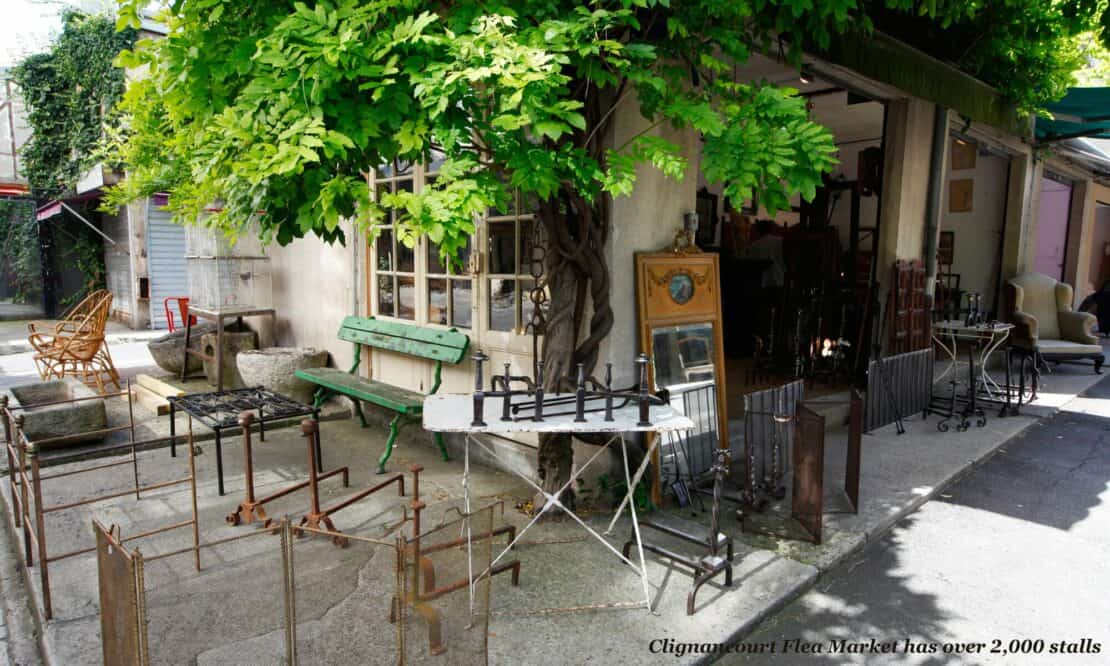
Clignancourt Flea Market in Paris
La Clignancourt is a historical flea market in Paris and the second largest flea market in Europe after London’s Portobello Road. It’s open to the public on Saturdays, Sundays and Mondays and you can easily spend half a day here.
It is a big bazaar with over 2,000 stalls, selling anything from clothes to pets to old records and books and antiques. There are also food stalls and cafes where you can stop for something to eat and drink while you browse around.
- Top tip for this hidden gem in Paris: visit on a cold and snowy day or on Mondays or mid-August for the best chance of a bargain.
Musée National du Moyen Age – Thermes de Cluny
The Musée National du Moyen Age – Thermes de Cluny is a medieval museum in Paris, with rather a mouthful of a name. It was opened in 1882 and it is considered one of the most important museums for medieval art in Europe. So why do I consider it to be one of the hidden gems in Paris? Because hardly anyone I know visits! It contains collections from the Middle Ages such as sculptures, paintings, furniture and stained glass windows.
This museum is a great place to visit if you want to see how people lived during the Middle Ages and to add a little depth to your Paris itinerary.
Le Jardin des Plantes – Museum National D’Histoire Naturelle
The Jardin des Plantes is the oldest botanical garden in Paris, created by King Louis-Philippe in 1834. The garden features more than 8,000 species of plants and trees and provides places for recreation and relaxation like the Japanese Garden, the Rose Garden, and the Insectarium.
In short, it’s a blissful, peaceful hidden spot in Paris.
Le Jardin des Plantes also has a museum inside called Musée National d’Histoire Naturelle (MNHN). MNHN is one of the largest natural history museums in Europe with over 35,000 specimens of animals both living and extinct. The collections at MNHN include minerals, fossils, insects, butterflies, mollusks and crustaceans.
More on Travel in Paris
We have a collection of Paris itineraries, from 48 hours in Paris to 4 days in Paris. Plus, of course, the best guide on shopping in Paris and the souvenirs that matter when it comes to what to bring back from France. Finally, check out our guide to visiting Paris with kids and these top tips on how to see Paris like a local.


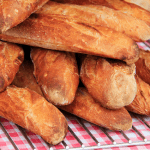

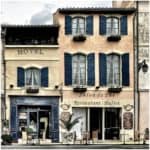
Consider dining at Le Train Bleu, located in the Gare du Lyon train station. It is a flashback in time when the Orient Express was the height of European train travel.
OOh, that does sound like something that’s right up my street. Will check it out next time I’m there. Cheers!
#2 should read Montparnasse Tower
You’re absolutely right! Thanks for the catch – Abi